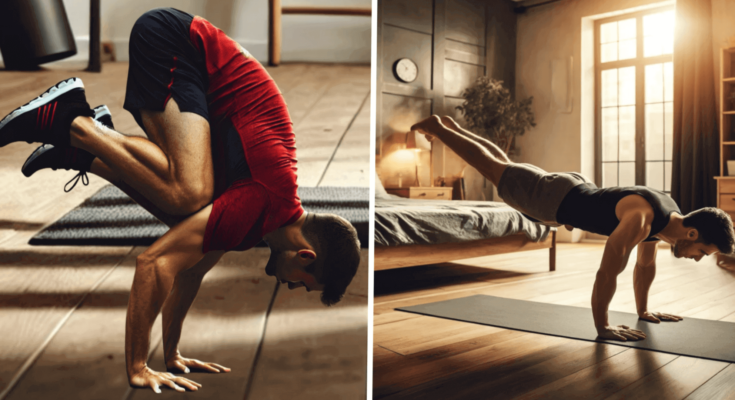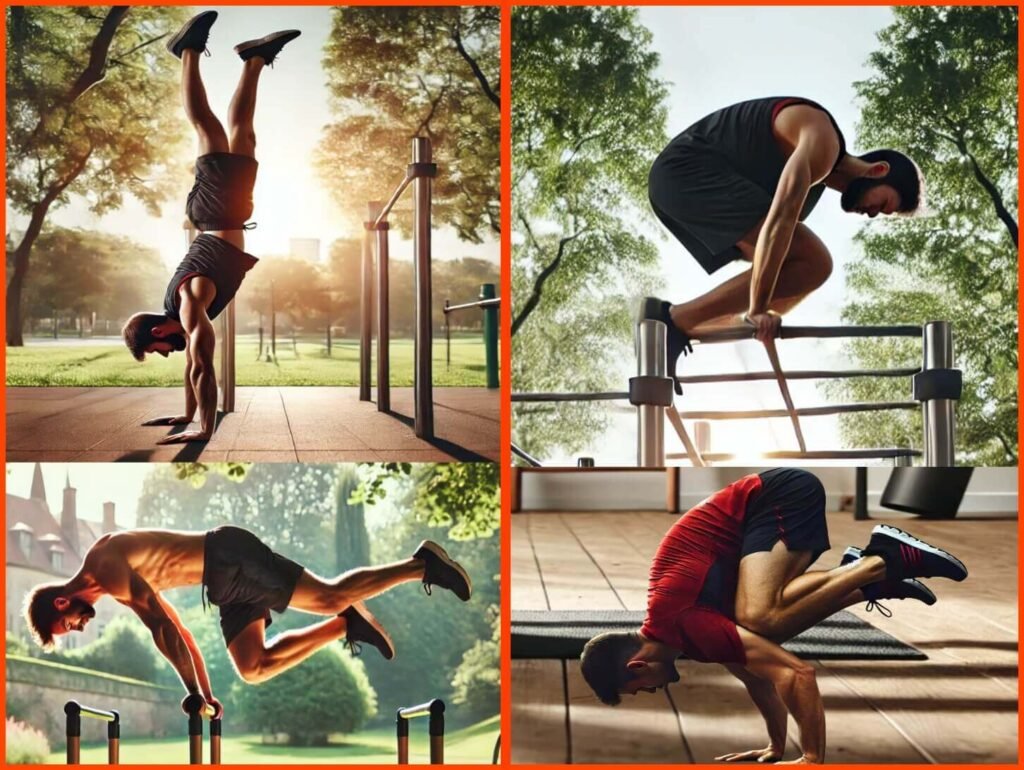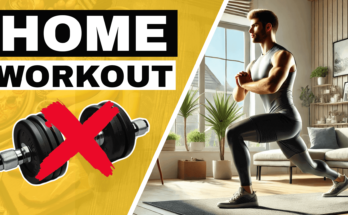Have you ever watched influencers on social media doing incredible calisthenics moves like the planche or handstand and thought, “I want to do that too”? You want to be stronger—like, super strong—without needing heavy weights or fancy gym equipment. Well, building superhuman strength with calisthenics is the perfect solution. It’s a simple and effective way to build strength using just your body. I’ve personally seen how it can completely transform your fitness journey. Whether you’re new to working out or you’ve been at it for a while, calisthenics helps you push your limits and reach incredible strength. And the best part? You can do it anywhere, anytime.
In this guide, I’ll show you how to get started with calisthenics and build strength that feels almost “superhuman.” Ready to get started? Let’s dive in!
What is Calisthenics?
Calisthenics is a type of exercise that uses your own body weight to build strength, flexibility, and endurance. Instead of lifting heavy weights or using machines, you use moves like push-ups, squats, and planks. These exercises work your whole body and can be done anywhere, at home or in the park. It’s a simple, natural way to get stronger and also build muscles.
Basic Exercises to Learn Calisthenics
If you’re new to calisthenics, it’s best to start with some basic exercises that will help you build strength and get comfortable with your body movements. Here are some exercises:
Push-ups – A great exercise for building strength in your arms, chest, and shoulders.
Squats – This helps strengthen your legs and glutes.
Planks – A simple way to work your core muscles (your stomach and back).
Lunges – These are great for building strength and balance in your legs.
Dips – These are great for working your arms, chest, and shoulders, and especially help build strong triceps.
Pull-ups – Great for building strength in your back, shoulders, and arms. They’re great for improving your upper body strength and endurance.
Start with these basic exercises, and as you get stronger, you can try more advanced moves. The key is to practice regularly, and over time, you’ll see improvements in your strength and muscle tone. If you’re already able to do these exercises comfortably, it’s a good sign you’re ready to challenge yourself with more advanced moves.
Basic Moves to Learn in Calisthenics
If you’re just starting calisthenics, these basic moves will help you build strength and control. They are simple exercises that focus on different parts of your body. Here’s what they are and how to do them:
Push-up Variations
How to do it: Start with regular push-ups. When you’re comfortable, try variations like diamond push-ups (hands closer together) or wide push-ups (hands wider apart) to work different muscles.
Pull-ups
How to do it: Find a pull-up bar and grab it with both hands, palms facing away from you. Hang from the bar, then pull your body upward until your chin is above the bar. Lower yourself back down with control. If you’re a beginner, you can use an assisted pull-up machine or resistance bands to help you.
Dips
How to do it: Use parallel bars or a bench. Place your hands on the bars with your elbows bent. Lower your body down by bending your elbows, then push yourself back up to the starting position. As you get stronger, you can try full dips on parallel bars instead of a bench.
Squat Jumps
These will help you build explosive strength in your legs and improve your stamina.
How to do it: Stand with your feet shoulder-width apart. Lower into a squat position, then explosively jump as high as you can. Land softly and immediately go into another squat for the next jump.
Mountain Climbers
A move that works your core, shoulders, and legs, while also improving your cardiovascular fitness.
How to do it: Start in a plank position with your hands under your shoulders and your body in a straight line. Bring one knee toward your chest, then quickly switch legs, as if you’re “climbing.” Keep your core engaged and your hips stable as you alternate legs.
L-Sit
A move that works your core and helps improve your balance and flexibility. It’s challenging, but a great skill to build.
How to do it: Sit on the floor and place your hands beside your hips, fingers pointing forward. Lift your legs off the ground while keeping them straight in front of you. Hold this position as long as you can. It’s a great move for building core strength.
Frog Stand
This is a beginner-level balance move that helps you build the strength and control needed for advanced poses like the handstand.
How to do it: Start in a squat position with your knees close to your chest. Place your hands on the ground in front of you, then lean forward and lift your feet off the ground, balancing on your hands. Keep your knees bent and close to your body as you hold the position. This is a great move to help build the strength needed for handstands.
Elbow Lever
A core and shoulder exercise where you balance on your elbows. It’s a great way to develop strength and stability.
How to do it: Start by kneeling on the floor and placing your elbows on the ground in front of you, hands pointing out to the sides. Lean forward, shifting your weight onto your elbows, and try to lift your feet off the ground. Hold this position as long as you can. The elbow lever works your core, shoulders, and balance.
Advanced Moves to Learn in Calisthenics
Advanced moves in calisthenics are harder exercises that need more strength, balance, and control. They push you to the next level after you’ve mastered the basics. At first, these moves might seem really tough, but with regular practice and patience, you can do them. Here are some advanced calisthenics moves:
One-arm Push-up
A push-up done using only one arm.
How to do it: Start with regular push-ups to build strength. Then, practice shifting more weight onto one arm while the other arm provides less support. To make balancing easier, widen your legs for a more stable base. As you get stronger, focus on using only one arm while keeping your body straight and controlled.
Handstand
Balancing your body upside down on your hands.
How to do it: Start by practicing against a wall for support. Place your hands on the floor, kick your legs up, and try to balance. It’s great for building upper body strength and balance.





